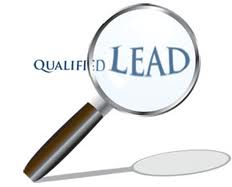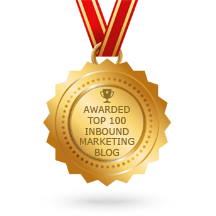 Recently I wrote an article called 5 Steps To Getting Found Online. The purpose of that article was to help business owners and marketers understand that there are specific tactics they 'must' implement if they want their website to work for them. By "work for them" I mean more than just show up on Google's front page, but to actually attract qualified traffic to their website, and keep them on their site. To learn more read the article here: 5 Steps To Getting Found Online: The Inbound Marketing Methodology
Recently I wrote an article called 5 Steps To Getting Found Online. The purpose of that article was to help business owners and marketers understand that there are specific tactics they 'must' implement if they want their website to work for them. By "work for them" I mean more than just show up on Google's front page, but to actually attract qualified traffic to their website, and keep them on their site. To learn more read the article here: 5 Steps To Getting Found Online: The Inbound Marketing Methodology
The second step in this process is to then convert your website traffic into qualified leads and customers. The word "qualified" is key when we're talking about conversions, the quality of your leads is more important than the quantity.
Here are 7 steps to help you convert more traffic into qualified leads and leads into customers.
1. Calls To Action (CTA)
Calls to action should be on every page of your website. They should be relevant to the information on the page, and stage of the buy cycle of the visitor. For example; visitors to your website will typically be at different stages of the buy cycle, some are doing research, some are ready to buy. You don't want to make the process difficult or confusing for those visitors who are ready to buy or who want to speak to a sales consultant. For these visitors make sure you have clear next steps like; 'To speak to a consultant call [1234 1234]'. For people doing research you might have on your product pages a call to action that takes them to the next stage for example: 'View other products in this range', or 'learn more about our team', or 'view our testimonies'.
2. Lead Generation Offers
You've probably noticed many websites now offer free information, often in the form of an ebook or webinar. The value of having a free lead generation offer on your website is, it gives you a unique opportunity to capture the contact information of people who have visited your site, are interested in your company and/or have a need for your product or service. The key is to make sure the content you provide in your ebook or webinar is of value to your audience, it's information for which they are looking, and information that will help them buy from you?
3. Landing Pages
These are conversion pages on your website. Pages you want your audience to land on, and ultimately convert into a lead. An example would be the page on your website that promotes your free ebook or webinar. A successful landing page has only one Call To Action (CTA), and doesn't include the top menu bar - this limits distractions and the chance your visitor will leave the page before converting. The content on a landing page should be very clear to whom you are targeting, the value to them and what they are to do. Bullet points, minimal text and a relevant image increase conversions, and of course you'll want to include a conversion form.
4. Lead Conversion Forms
Conversion forms should be placed on key pages on your website. There has been some research conducted on the best number of fields with 3 fields yielding the highest conversion rate. If you find that you're attracting poor quality leads then it would be beneficial to ask more information to better qualify your leads, even if it means less conversions. By field I mean the information for which you ask, eg: name, company, email, telephone etc...
5. Thank You Pages
A thank you page is a page that shows up after a lead completes a conversion form. Ideally it will show the main menu bar - giving your new lead the opportunity to return to your website. And will include a brief message of gratitude, that explains what to expect next and asks them to convert. This could be as simple as an invitation to join you on social media or a call to action to speak to a sales consultant.
6. Auto Responders
These are the automatic messages, (email), that are sent after your website visitor completes the conversion form. If they downloaded a free ebook, then this auto responder would include a link to download the ebook, or if they signed up for a webinar it would include information about how to sign in for the webinar.
7. Lead Nurturing (aka Workflows)
Nurturing your leads is an important part of the customer acquisition process. It helps marketing to better qualify leads before handing over to the sales department. Ideally you'd want to automate this process with marketing automation software. Today's technology is advanced enough that you can customise your leads' experience based on their interest. For example if they've visited your product page on 'widget x' you can automatically send them an email that provides additional information about 'widget x' only. You might send a spec sheet, or relevant client case study. Providing relevant content is key to nurturing your leads and keeping them interested and engaged with your company.
Related Articles You May Find Helpful:
Social Media For SEO, Email Marketing and CTA Examples
10 Ways Hubspot Will Help You Increase Leads and Customers
Learn The Inbound Marketing Approach To Meaningful Engagement

 Recently I wrote an article called
Recently I wrote an article called 
